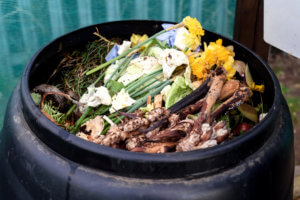 A brief look at the what, where, why and how of composting
A brief look at the what, where, why and how of composting
Successful Composting
Compost is organic material that when added to soil it makes everything thrive and grow better. It enriches the soil, helps retain moisture and suppresses plant diseases and pests.
Here are three ways you can use compost in your garden:
- As moisture holding mulch – spread it around plants, trees, and shrubs.
- To improve existing soil conditions – dig from 2 to 4 inches down, throw the compost in there, and mix it in with the rest of the soil at planting time.
- Lawn top dressing – apply from 1 to 3 inches of compost to the lawn then rake and water it in.
Other incentives to get you ‘excited’ about composting:
- Food scraps and yard waste currently make up 20 to 30 percent of what we throw away so like recycling when you compost there is less material going into the landfill.
- Reduces the need for chemical fertilizers.
- Encourages the production of beneficial bacteria and fungi, which break down organic matter to create humus, a rich nutrient-filled material.
- Reduces methane emissions from landfills and lowers your carbon footprint.
- Decrease soil erosion by enhancing soil structure.
- Reduce watering needs by improving water retention in the soil.
Creating a backyard composting is quite simple (Source EPA)
- Select a dry, shady spot near a water source for your compost pile or bin.
- Add brown and green materials as they are collected, making sure larger pieces are chopped or shredded.
- Moisten dry materials as they are added.
- Once your compost pile is established, mix grass clippings and green waste into the pile and bury fruit and vegetable waste under 10 inches of compost material.
- Optional: Cover top of compost with a tarp to keep it moist. When the material at the bottom is dark and rich in colour, your compost is ready to use. This usually takes anywhere from two months to two years.
Every area of your home has a lot of things you can successfully compost but you also have to consider what you put into your compost affects how long the process will take. For a thorough breakdown of both of these factors we recommend this article in Small Footprint Family 100 Things You Can Compost.







